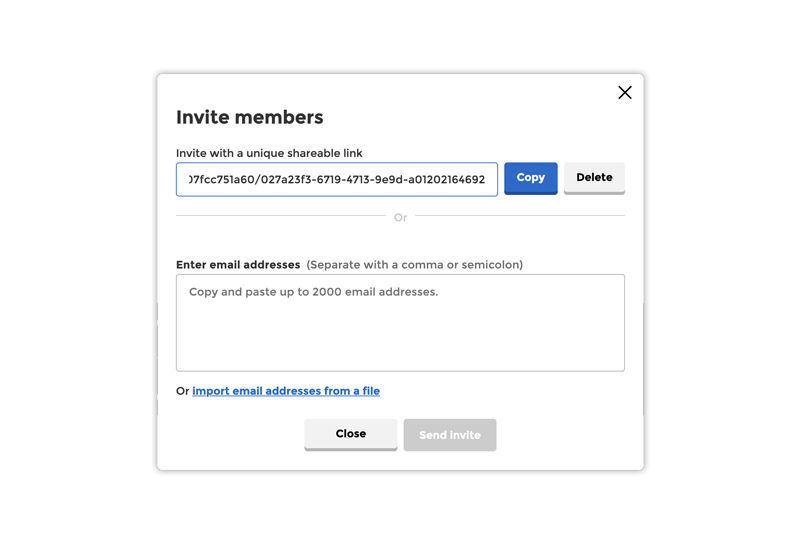The Higher Colleges of Technology is the largest, state-funded higher education institution in the United Arab Emirates. With 16 campuses across the country, we have around 21,000 students and 1,100+ full-time faculty.

I manage the Teaching with Technology team, and our responsibility is to provide faculty with professional development on how to effectively integrate educational technology in the classroom. We also evaluate the various educational technology tools available on the market and work with the academic divisions to decide which tools to purchase.
Over the past couple of years, we have had several instructors from the English Communication department successfully using Kahoot! in their classroom. These faculty are usually open to trying new technologies in their classes. However, last year when several of the Engineering faculty members expressed how much they also enjoyed using Kahoot! with their students and requested licenses, we decided it was time to purchase a site license. We knew if the Engineering faculty were finding value with this tool, the other departments would as well.
Together with my colleagues, we started rolling out a Kahoot! site license in November 2019 and quickly onboarded hundreds of teachers. Here is how we planned our implementation strategy and what we learned along the way.
Four focus areas in a Kahoot! license implementation strategy
We focused on four main areas in our implementation strategy:
- Creating a communication plan to demonstrate the value of the tool
- Organizing professional development to train staff
- Supporting the system through the EdTech Learning Community
- Fostering word of mouth and early adoption
At every stage of our implementation strategy, even before inviting teachers to join Kahoot!, we did a lot of communication and training to demonstrate the tool and its value, so everyone was able to decide whether they wanted to join Kahoot! and when. For example, we published a series of posts about Kahoot! and other learning technology tools, as well as additional resource recommendations, on our EdTech blog to which many faculty members subscribe.
With the help from the Kahoot! team, we developed an efficient process to distribute invitations to our faculty members. Our account manager Sabeba supported us in setting up an email campaign to send out the initial invitation to join Kahoot!.

Kahoot! EDU makes it easy to roll out a site license and invite teachers via a shareable link.
After we sent out the invitations, we did follow ups via Yammer and sent out emails with tips and tricks about Kahoot! such as file management, how to access your kahoots, and more. To provide our teachers full flexibility and the time they needed to get on board with Kahoot!, we made sure that those who hadn’t accepted the first invitation were able to apply to get their Kahoot! license at any time.
Professional development is mission-critical for new technology
When adopting a new learning technology tool at a system-wide level, it is important not only to provide information about the tool, but also to support faculty in the implementation of the tool with relevant professional development. Here are some of the activities we have been running during the implementation of our Kahoot! site license:
As part of our formal professional development, we offer a course called Creating Engaging Formative Quizzes in Kahoot!. In this course, we go through the technical aspects of creating a kahoot, and then we ask the faculty to try hosting a kahoot with their students and come back with reflections on how it went. We started offering this course before our site-license implementation and it was part of the reason faculty were so excited to start using Kahoot! in the classroom.
After the site-license implementation, we started conducting two additional courses called Creating Trackable Flipped Classroom Content and Adding Interactivity in your Online Class. We don’t show the technical aspects of Kahoot! in these courses; rather, we demonstrate how the tool can be used as part of pedagogically-sound teaching strategies.
We have now offered over 55 sessions to approximately 1500 participants that demonstrate how faculty can use Kahoot! in their classrooms. That is over 6400 hours of professional development addressing the implementation of Kahoot!.
Results of implementing a Kahoot! site license at HCT
Thanks to a combination of an efficient process for implementing a site-license and extensive word of mouth, we quickly onboarded hundreds of faculty members in November 2019. We were also able to offer professional development to help them create and launch kahoots for their students.
Just a few weeks after we launched, we had 305 Kahoot! members; by mid-June, we had over 800 people using the license. So far teachers have created almost 1,000 unique kahoots and that number is quickly growing as we start a new academic year.
Since launching the site-license, we’ve had over 1,900 student-paced Kahoot! challenges launched and over 6,800 live sessions hosted with more than 86,000 participants. These numbers demonstrate how quickly HCT faculty have adopted and implemented Kahoot! in their classes and how students have been actively participating in the kahoots and continue to do so.
Most importantly, we have seen how Kahoot! has improved the teaching and learning experience. In a recent survey, 64% of teachers named Kahoot! as a tool that, in their opinion, supports student learning. They use it to introduce concepts, review and assess knowledge, as well as to motivate students to participate in class.




